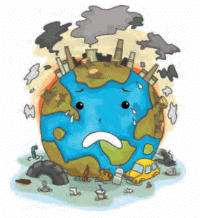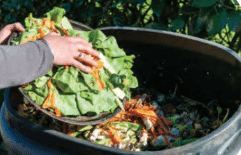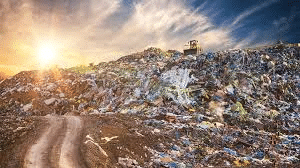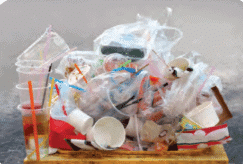Odd One Out Questions
(i) Sunlight, Water, Plastic, Air
(ii) Composting, Recycling, Landfill, Vermicomposting
(iii) Carbon dioxide, Oxygen, Methane, Nitrogen
(iv) Recycling, Reducing, Reusing, Burning

(i) What does the term 'environment' include?
(a) Only living things
(b) Only non-living things
(c) Both living and non-living things
(d) None of the above
(ii)Which type of waste can be broken down by natural processes?
(a) Non-biodegradable
(b) Biodegradable
(c) Industrial waste
(d) Inorganic waste

(iii)What is the primary cause of air pollution?
(a) Deforestation
(b) Soil erosion
(c) Industries and vehicles
(d) Overpopulation
(iv) Which gas is a major component of biogas?
(a) Oxygen
(b) Nitrogen
(c) Carbon dioxide
(d) Methane
(v) What effect does global warming have on ice caps?
(a) They expand
(b) They melt
(c) They become thicker
(d) They change colour
(i) Waste that does not rot and cannot be broken down by decomposers is called ________ waste.
(ii) The lowest layer of Earth's atmosphere is the ________.
(iii)______ is a technique that uses red earthworms to break down organic material into vermicompost.
(iv)______ pollution is caused by the loud noise of machines and vehicles.
(v) The process of managing waste by creating new products from old items is called ________.
(i) The environment only includes living things.
(ii) Biodegradable waste is harmful to the environment.
(iii) Recycling can help reduce environmental pollution.
(iv) Greenhouse gases do not include oxygen.
(v) Global warming is solely caused by natural processes.
(vi) Landfills are a sustainable method to manage waste.
 (vii) Noise pollution only affects humans.
(vii) Noise pollution only affects humans.
(viii) The increase in atmospheric carbon dioxide levels has no effect on ocean chemistry.

(i) Sunlight, Water, Plastic, Air
(ii) Composting, Recycling, Landfill, Vermicomposting
(iii) Carbon dioxide, Oxygen, Methane, Nitrogen
(iv) Recycling, Reducing, Reusing, Burning
 |
Download the notes
Worksheet: Our Environment - 1
|
Download as PDF |
(i) How can the practice of recycling benefit our community in the long run?
(ii) What simple steps can you take at home to reduce air pollution?

(i) What is the role of decomposers in the environment?
(ii) Why is it important to manage non-biodegradable waste?
(iii) What are the effects of global warming on the environment?
(iv) How does air pollution affect human health and the environment?
(v) Describe two ways individuals can contribute to reducing their environmental impact.
You can access the solutions to this worksheet here.
|
42 videos|210 docs|45 tests
|
| 1. What are the main components of our environment? |  |
| 2. How does pollution affect our environment? |  |
| 3. What can we do to protect our environment? |  |
| 4. Why is it important to conserve natural resources? |  |
| 5. What role do plants play in our environment? |  |